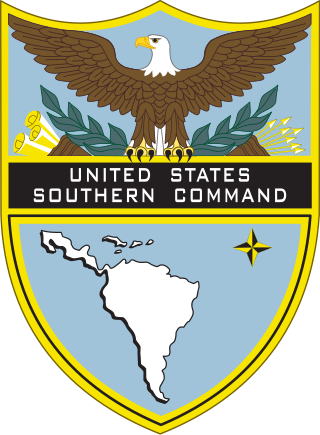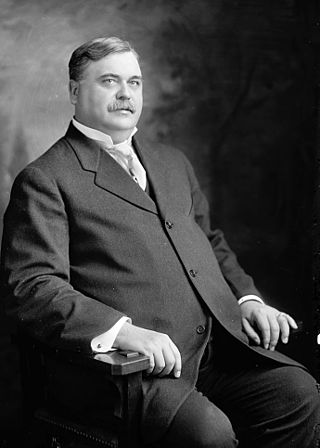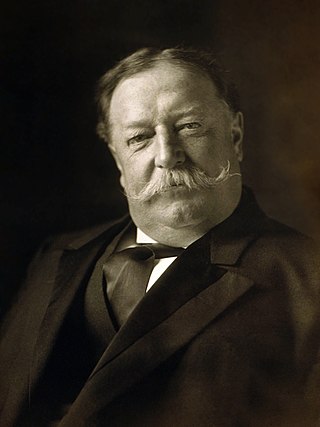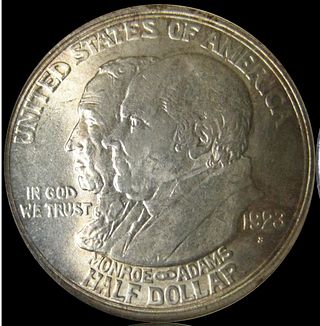Related Research Articles

Theodore Roosevelt Jr., also known as Teddy or T. R., was the 26th president of the United States, serving from 1901 to 1909. He previously was involved in New York politics, including serving as the state's 33rd governor for two years. He was the vice president under President William McKinley for six months in 1901, assuming the presidency after McKinley's assassination. As president, Roosevelt emerged as a leader of the Republican Party and became a driving force for anti-trust and Progressive policies.

William Howard Taft was the 27th president of the United States and the tenth chief justice of the United States, the only person to have held both offices. Taft was elected president in 1908 as a Republican and defeated for reelection in 1912 by Democratic nominee Woodrow Wilson in a three-way race that included former president Theodore Roosevelt. In 1921, President Warren G. Harding appointed Taft to be chief justice, a position he held until 1930.

The Panama Canal Zone, also simply known as the Canal Zone, was a concession of the United States located in the Isthmus of Panama that existed from 1903 to 1979. It consisted of the Panama Canal and an area generally extending five miles (8 km) on each side of the centerline, but excluding Panama City and Colón. Its capital was Balboa.

The Panama–Pacific International Exposition was a world's fair held in San Francisco, California, United States, from February 20 to December 4, 1915. Its stated purpose was to celebrate the completion of the Panama Canal, but it was widely seen in the city as an opportunity to showcase its recovery from the 1906 earthquake. The fair was constructed on a 636-acre (257-hectare) site along the northern shore, between the Presidio and Fort Mason, now known as the Marina District.

The Panama–California Exposition was a world exposition held in San Diego, California, between January 1, 1915, and January 1, 1917. The exposition celebrated the opening of the Panama Canal, and was meant to tout San Diego as the first United States port of call for ships traveling north after passing westward through the canal. The fair was held in San Diego's large urban Balboa Park. The park held a second Panama-California exposition in 1935.

The United States Southern Command (USSOUTHCOM), located in Doral in Greater Miami, Florida, is one of the eleven unified combatant commands in the United States Department of Defense. It is responsible for providing contingency planning, operations, and security cooperation for Central and South America, the Caribbean, their territorial waters, and for the force protection of U.S. military resources at these locations. USSOUTHCOM is also responsible for ensuring the defense of the Panama Canal and the canal area.

Charles Edward Magoon was an American lawyer, judge, diplomat, and administrator who is best remembered as a governor of the Panama Canal Zone; he also served as Minister to Panama at the same time. He was Provisional Governor of Cuba during the American occupation of Cuba from 1906 to 1909.

The idea of the Panama Canal dates back to 1513, when the Spanish conquistador Vasco Núñez de Balboa first crossed the Isthmus of Panama. This narrow land bridge between North and South America was a fine location to dig a water passage between the Atlantic and Pacific Oceans. The earliest European colonists recognized this, and several proposals for the construction of a canal were made.

The presidency of Theodore Roosevelt started on September 14, 1901, when Theodore Roosevelt became the 26th president of the United States upon the assassination of President William McKinley, and ended on March 4, 1909. Roosevelt had been the vice president for only 194 days when he succeeded to the presidency. A Republican, he ran for and won by a landslide a four-year term in 1904. He was succeeded by his protégé and chosen successor, William Howard Taft.

The U.S. Commission of Fine Arts (CFA) is an independent agency of the federal government of the United States, and was established in 1910. The CFA has review authority over the "design and aesthetics" of all construction within Washington, D.C. In accordance with the Old Georgetown Act, the CFA appoints the Old Georgetown Board. The Old Georgetown Board has design review authority over all semipublic and private structures within the boundaries of the Georgetown Historic District. The CFA was granted approval authority by the Shipstead-Luce Act over the design and height of public and private buildings which front or abut the grounds of the United States Capitol, the grounds of the White House, Pennsylvania Avenue NW extending from the Capitol to the White House, Lafayette Square, Rock Creek Park, the National Zoological Park, the Rock Creek and Potomac Parkway, Potomac Park, and the National Mall and its constituent parks.

The presidency of William Howard Taft began on March 4, 1909, when William Howard Taft was inaugurated as 27th president of the United States, and ended on March 4, 1913. Taft was a Republican from Ohio. The protégé and chosen successor of President Theodore Roosevelt, he took office after easily defeating Democrat William Jennings Bryan in the 1908 presidential election. His presidency ended with his landslide defeat in the 1912 election by Democrat Woodrow Wilson, after one term in office.
The Isthmian Canal Commission was an American administration commission set up to oversee the construction of the Panama Canal in the early years of American involvement. Established on February 26, 1904, it was given control of the Panama Canal Zone over which the United States exercised sovereignty. The commission reported directly to Secretary of War William Taft.

The Monroe Doctrine Centennial half dollar was a fifty-cent piece struck by the United States Bureau of the Mint. Bearing portraits of former U.S. Presidents James Monroe and John Quincy Adams, the coin was issued in commemoration of the centennial of the Monroe Doctrine and was produced at the San Francisco Mint in 1923. Sculptor Chester Beach is credited with the design, although the reverse closely resembles an earlier work by Raphael Beck.
The 1901 State of the Union Address was given on Tuesday, December 3, 1901, by the 26th president of the United States, Theodore Roosevelt. It was presented to both houses of the 57th United States Congress, but he was not present. He stated, "The Congress assembles this year under the shadow of a great calamity. On the sixth of September, President McKinley was shot by an anarchist while attending the Pan-American Exposition at Buffalo, and died in that city on the fourteenth of that month." He concluded it with, "Indeed, from every quarter of the civilized world we received, at the time of the President's death, assurances of such grief and regard as to touch the hearts of our people. In the midst of our affliction we reverently thank the Almighty that we are at peace with the nations of mankind; and we firmly intend that our policy shall be such as to continue unbroken these international relations of mutual respect and good will."

The five Panama–Pacific commemorative coins were produced in connection with the 1915 Panama–Pacific International Exposition in San Francisco. Struck at that city's mint, the issue included round and octagonal $50 pieces. Excepting modern bullion coins, these two gold pieces are the highest denomination ever issued and the largest coins ever struck by the United States Mint. The octagonal $50 piece is the only U.S. coin to be issued that is not round.

The history of U.S. foreign policy from 1897 to 1913 concerns the foreign policy of the United States during the Presidency of William McKinley, Presidency of Theodore Roosevelt, and Presidency of William Howard Taft. This period followed History of U.S. foreign policy, 1861–1897 and began with the inauguration of McKinley in 1897. It ends with Woodrow Wilson in 1913, and the 1914 outbreak of World War I, which marked the start of new era in U.S. foreign policy.
The presidency of Theodore Roosevelt began on September 14, 1901, when Theodore Roosevelt was inaugurated as the 26th president of the United States following the assassination of William McKinley, and it ended on March 4, 1909.

The foreign policy of the Theodore Roosevelt administration covers American foreign policy from 1901 to 1909, with attention to the main diplomatic and military issues, as well as topics such as immigration restriction and trade policy. For the administration as a whole see Presidency of Theodore Roosevelt. In foreign policy, he focused on Central America where he began construction of the Panama Canal. He modernized the U.S. Army and expanded the Navy. He sent the Great White Fleet on a world tour to project American naval power. Roosevelt was determined to continue the expansion of U.S. influence begun under President William McKinley (1897–1901). Roosevelt presided over a rapprochement with the Great Britain. He promulgated the Roosevelt Corollary, which held that the United States would intervene in the finances of unstable Caribbean and Central American countries in order to forestall direct European intervention. Partly as a result of the Roosevelt Corollary, the United States would engage in a series of interventions in Latin America, known as the Banana Wars. After Colombia rejected a treaty granting the U.S. a lease across the isthmus of Panama, Roosevelt supported the secession of Panama. He subsequently signed a treaty with Panama which established the Panama Canal Zone. The Panama Canal was completed in 1914, greatly reducing transport time between the Atlantic Ocean and the Pacific Ocean. Roosevelt's well-publicized actions were widely applauded.
The presidency of William Howard Taft began on March 4, 1909, when William Howard Taft was inaugurated the 27th president of the United States and ended on March 4, 1913.
The 1909 State of the Union Address was written on December 7, 1909, by William Taft, the 27th president of the United States. It was the first address by Taft
References
- ↑ "Joint Meetings, Joint Sessions, & Inaugurations | US House of Representatives: History, Art & Archives". history.house.gov. Retrieved 21 October 2024.
- ↑ "Annual Message to Congress (1911)". Teaching American History. Retrieved 2024-12-02.